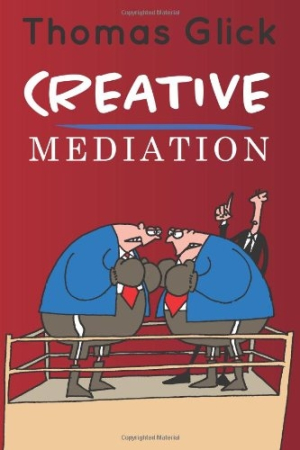Creative Meditation
Why can’t we all just get along? Well, sometimes we can, according to Thomas Glick in Creative Mediation, his book of solutions for sticky legal situations. Glick worked for years as a lawyer in Florida, growing increasingly frustrated by a contentious legal system that often left all parties feeling defeated, regardless of who won the case. He believes that the legal process need not be so painful. His book chronicles his journey from litigator to mediator, a role in which he can facilitate a process that has the potential to provide more satisfying outcomes for everyone involved.
Cofounder of the Center for Conflict Resolution, Glick has mediated 7,500 cases throughout the United States since 1995. In this book, he draws from this vast experience to present case studies that illustrate some of the common themes he sees in his work; readers are invited to peek into the conference rooms where Glick hashes out creative solutions with lawyers, plaintiffs, and defendants.
One common theme found in all of Glick’s examples is the need for the mediator to bond with the people involved in a dispute on a personal level. For instance, when automobile accident victims Sally and Bob sue an insurance company for medical expenses, Glick does not just look at the facts of the case. He also watches how the couple interacts with one another and the lawyers. He notices body language—crossed arms and meaningful glances—that tells him this couple has a serious likability problem. No matter how strong their case, he observes that the insurance company’s lawyers are loathe to hand over any money to the pair. Creativity plays a significant role in this matter, as Glick hammers out a unique agreement whereby the company prepays educational expenses for the couple’s children. In the end, the victims are happy that they have been awarded the money and the company is pleased to have paid out less than it expected.
Glick uses dozens of cases to illustrate such creative solutions. He advocates the use of humor, the appropriate introduction of personal details, and constant, careful listening. The book’s format has some shortcomings: each chapter theme is somewhat alarmingly announced with a bold headline treatment that seem at odds with the gentle approach Glick takes in his work; and specific themes, such as confidentiality and neutrality, among others, overlap and make it easy to lose track of the illustrative intent of each example. Perhaps this is simply the complex nature of Glick’s call for creative, not cookie-cutter, solutions, but it deserves consideration.
Although Glick mentions his belief that mediation skills are useful in all sorts of real-life situations, he spends little time supporting his view. Nonetheless, Creative Mediation would be of interest to any law student or an attorney considering an alternative to a conventional legal career.
Reviewed by
Sheila M. Trask
Disclosure: This article is not an endorsement, but a review. The publisher of this book provided free copies of the book and paid a small fee to have their book reviewed by a professional reviewer. Foreword Reviews and Clarion Reviews make no guarantee that the publisher will receive a positive review. Foreword Magazine, Inc. is disclosing this in accordance with the Federal Trade Commission’s 16 CFR, Part 255.

